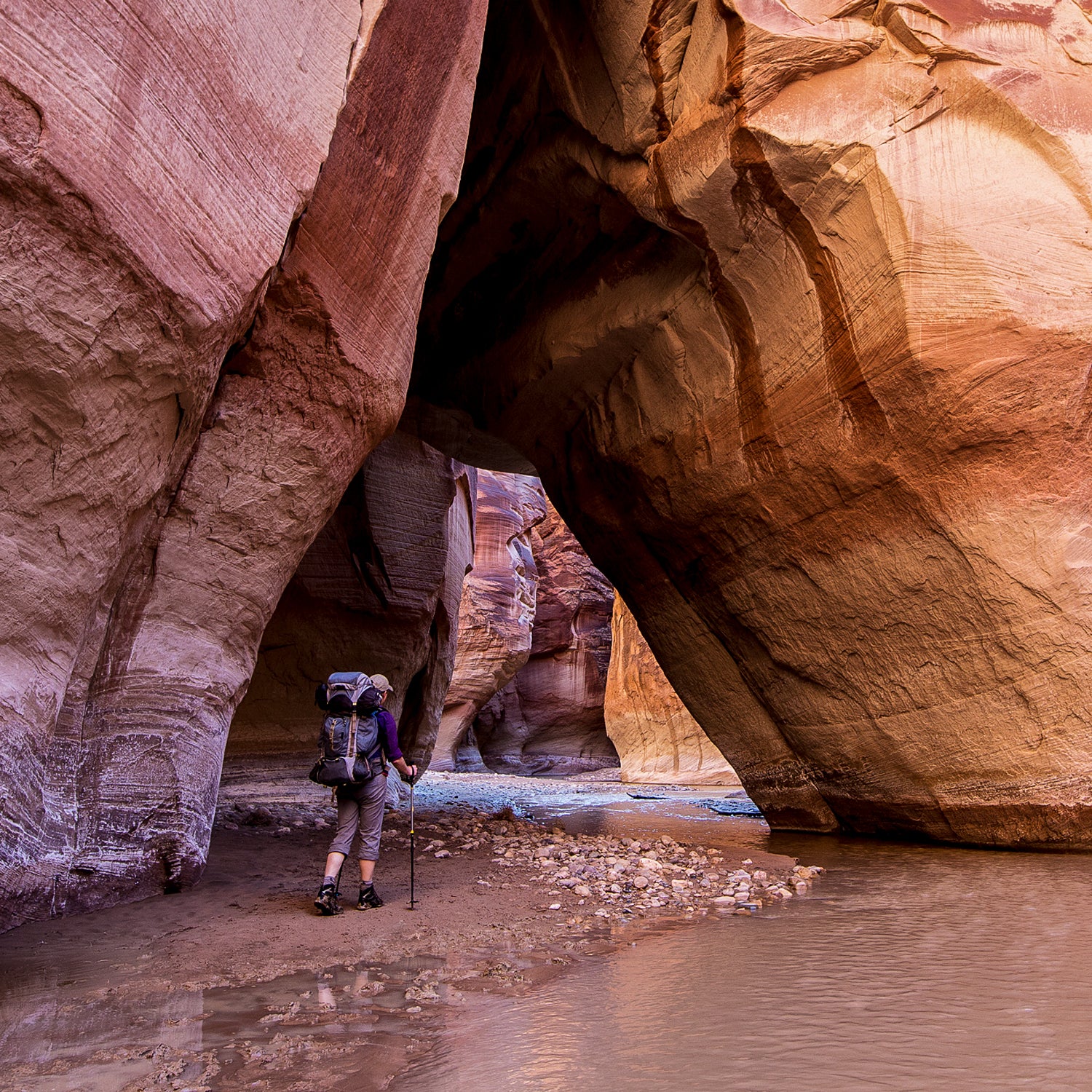Following months of secrecy about the results of Interior Secretary Ryan Zinke’s sham “review” of national monuments, some concrete details have been revealed in that was leaked to the Washington Post. To no one’s surprise, Zinke has apparently recommended that President Trump shrink four national monuments and open six others to mining, drilling, and logging. The result threatens to be the largest-ever reduction of protections for public lands and waters in U.S. history.
Let that sink in for a moment: the largest-ever reduction of protections for public lands and waters in U.S. history, which could total millions of acres. How, exactly, is that making America great?
As someone whose job description includes advocating for the responsible protection of public lands, of course I find the idea of turning over these lands to commercial exploitation disgraceful. But it hurts me on a personal level, too—these are places my family has grown to love.
Several summers ago, my wife, Mary, and I packed up our camping gear and our three young children—ranging in age from eight months to ten years—and set off on a classic American road trip. We stuffed our youngest into a backpack and camped, hiked, and explored our way through jaw-dropping landscapes in Nevada, Utah, Colorado, New Mexico, and Arizona, visiting lands that had been recently protected or, we hoped, soon would be. One of our stops was the newly designated Rio Grande del Norte National Monument, in northern New Mexico. We also explored what is now Utah’s Bears Ears National Monument and New Mexico’s Organ Mountains-Desert Peaks National Monument. All three are targeted by Zinke’s list.
The vast landscapes and stark beauty of red-rock country thrilled and entranced us, and we were happy to return for a second vacation trip a couple years later. What we learned on those visits, though, is that these places are much more than just scenic photo backdrops. To be sure, they make a fantastic outdoor playground for climbers, cyclists, hikers, and others. But national monuments are driving a booming outdoor recreation industry that provides a sustainable livelihood for many people in neighboring communities. That’s one reason people in those communities overwhelmingly support national monument designations.
It’s also important to recognize the long-standing connections that Native Americans have with special places like Bears Ears. I had the privilege of meeting with members of the local Navajo and Ute Mountain Ute communities during our second visit to Utah. For generations, the neighboring tribes have lived, worked, and practiced their traditions on these lands. In the case of Bears Ears, the ties are so strong that multiple tribal nations set aside their usual differences and united to help develop an innovative plan that uniquely included a lands-management partnership between Native people and the federal government.
My kids got it. They understood instinctively the value of special places, our connection to them, and why it’s important to preserve them.
During a visit to Bears Ears last May, Secretary Zinke acknowledged that sacred tribal lands should be preserved but questioned whether a national monument was the best way to do it—without, however, proposing any alternative. Then, in August, his interim report grudgingly admitted that the monument had “some objects that are appropriate for protection under the act.” In fact, it’s estimated that there are more than 100,000 cultural artifacts within Bears Ears. The current monument is already more than half a million acres smaller than what the Bears Ears Intertribal Coalition first proposed to protect those artifacts. To reduce it even further would be disastrous.
Although Interior Secretary Zinke can recommend stripping protections from Bears Ears and other national monuments, he can never sever the connection Native people have to these lands. That doesn’t mean it won’t be affected, though. Traditional practices certainly could be obstructed. What’s more, the door could slam shut on this important new way of incorporating traditional knowledge into public land management.
As usual, the Trump administration has it exactly wrong. Less than 3 percent of the public lands in the United States are protected from commercial exploitation. Constant and increasing pressure from mining, drilling, logging, and other development—along with the pollution and accelerated climate disruption those activities bring—means that we should be doing whatever we can to protect those few places that haven’t already been despoiled.
The American people certainly think so. They don’t want to see timeless views marred by fracking rigs, irreplaceable historical artifacts lost to looters, or cultural sites cut off in favor of mining access. The Interior Department’s 60-day public comment period during Zinke’s national monument review had an astounding 2,836,268 responses. According to an analysis by the , 98 percent of them favored maintaining or expanding existing monuments. Only 1 percent of respondents thought it would be a good idea to shrink them.
As I think about the future of our public lands, I keep going back to those summer trips with my family. My kids got it. They understood instinctively the value of special places, our connection to them, and why it’s important to preserve them. The American people do, too, and I expect that when they discover what this administration proposes, they will raise an outcry that even Secretary Zinke and President Trump cannot ignore.


